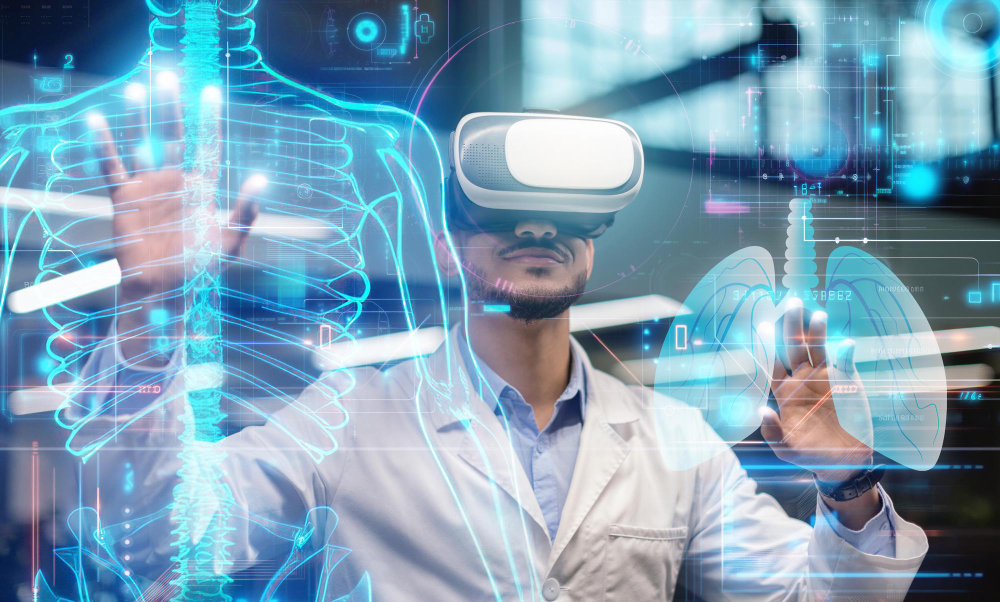
The Impact of New Technologies on Healthcare Training Programs
In recent years, the integration of advanced technologies into healthcare training programs has dramatically reshaped the educational landscape for future medical professionals. These technologies not only enhance learning experiences but also prepare students for a healthcare environment that is increasingly dependent on innovative tools for patient care and medical procedures. This article explores the various ways in which new technologies are influencing healthcare training, providing insights crucial for curriculum development and the cultivation of future skill sets.
Revolutionizing Learning with Virtual Reality
Virtual reality technology is making a profound impact on healthcare training by offering immersive simulations. These VR environments allow students to practice complex medical procedures in a controlled, risk-free setting. The ability to repeat procedures without the consequences associated with real-life operations helps students build confidence and proficiency. This safe, scalable method of training is particularly beneficial in specialties that require a high level of precision and expertise, such as surgery and emergency medicine.
AR to Enhance Real-World Training
Augmented reality (AR) enhances the learning experience by overlaying digital information onto the real world. During educational sessions or live surgeries, AR can project detailed anatomical structures or display dynamic visualizations of complex pathologies directly in the students’ field of vision. This method not only deepens the understanding of human biology but also helps in visualizing theoretical knowledge in a practical, interactive manner. As a result, AR is becoming an indispensable tool in medical education, bridging the gap between textbook learning and real-world application.
AI as a Teaching Assistant
The use of artificial intelligence (AI) in healthcare training is rapidly growing, with systems designed to educate students on diagnostics and patient management. AI algorithms are capable of analyzing vast datasets to identify patterns, predict outcomes, and suggest diagnoses, thus offering students a unique perspective on clinical decision-making processes. This exposure to AI-driven diagnostics prepares students for a future where technology and healthcare are intricately linked, ensuring they are adept at integrating AI tools into their clinical practice.
Preparing for the Future with Telemedicine Training
With the rise of telemedicine, healthcare training programs are increasingly incorporating modules that focus on delivering care remotely. Students learn not only about the technology but also about the nuances of digital communication, such as maintaining empathy and ensuring clarity without the benefit of physical presence. Training in telemedicine is essential as it equips future healthcare providers with the skills needed to offer effective, compassionate care in virtual settings—a growing facet of medical practice.
In-Clinic Technology Training
Training on new medical technologies can also occur directly within clinical settings. For instance, providers of shockwave therapy machines often visit clinics to train staff on the proper use of these devices. This in-person training allows healthcare professionals to learn by doing, which is crucial for technologies that require hands-on operation. Such training sessions not only minimize the need for travel but also offer real-time patient treatment experiences, often at a discounted rate, benefiting both learners and patients.
Customized Learning with 3D Printing
The adoption of 3D printing technology in medical training offers significant benefits, particularly in surgical education. This technology enables the creation of anatomically accurate models that reflect the specific complexities of individual patients or rare conditions. These models are invaluable in surgical training, where understanding the unique anatomical nuances of each case is critical. By providing customized, hands-on training tools, 3D printing enhances the educational experience and prepares students for real-life medical challenges.
Wearable Tech for Monitoring and Data Analysis
Wearable devices are increasingly used in healthcare training, teaching students about real-time patient monitoring and data analysis. These devices, which can track various health metrics like heart rate and activity levels, offer students live data to interpret and respond to. This experience is vital in a healthcare setting where quick, data-driven decision-making can significantly impact patient outcomes.
The impact of new technologies on healthcare training programs is profound and multifaceted. These technologies not only enhance educational experiences but also prepare future healthcare professionals for a world where technological proficiency is as crucial as medical knowledge. As these technologies evolve, so too must healthcare curricula, ensuring that the next generation of healthcare providers is well-equipped to meet the challenges of modern medicine.
Julia Merrill is on a mission. She wants to use information to close the gap between medical providers and their patients. Her site offers an abundance of information from tips on finding the right medical care to help with dealing with insurance companies to general health and wellness advice and more.
Disclaimer: The viewpoint expressed in this article is the opinion of the author and is not necessarily the viewpoint of the owners or employees at Healthcare Staffing Innovations, LLC.
